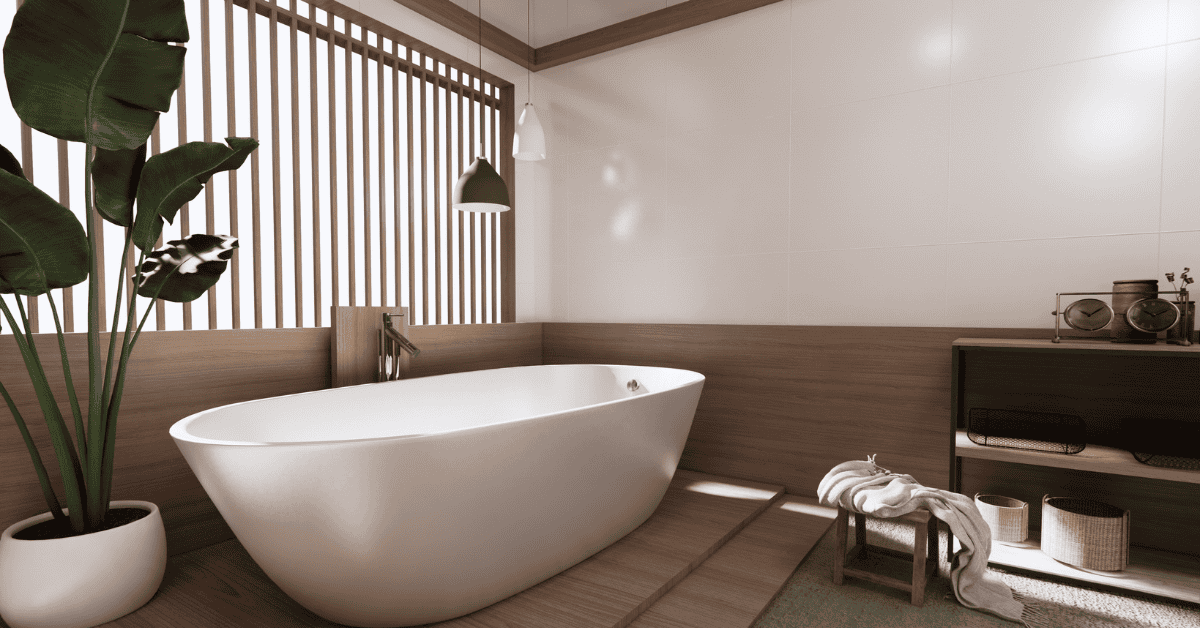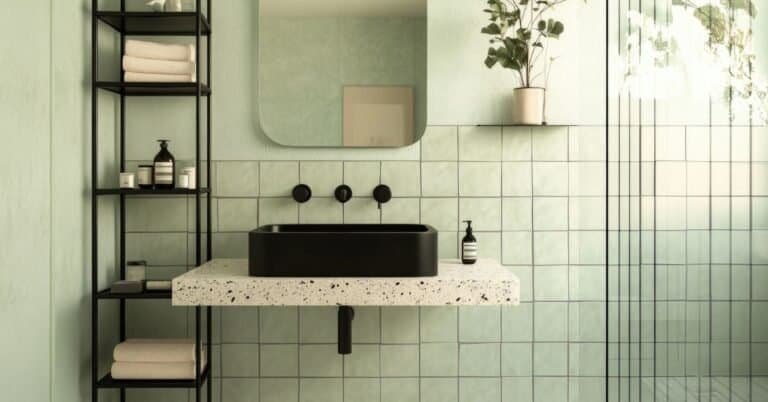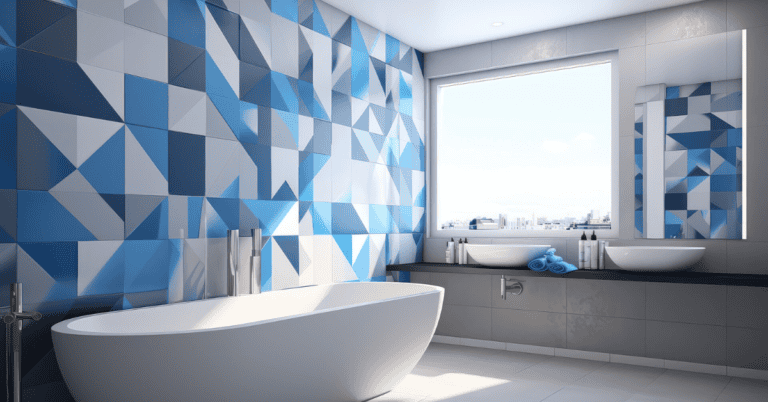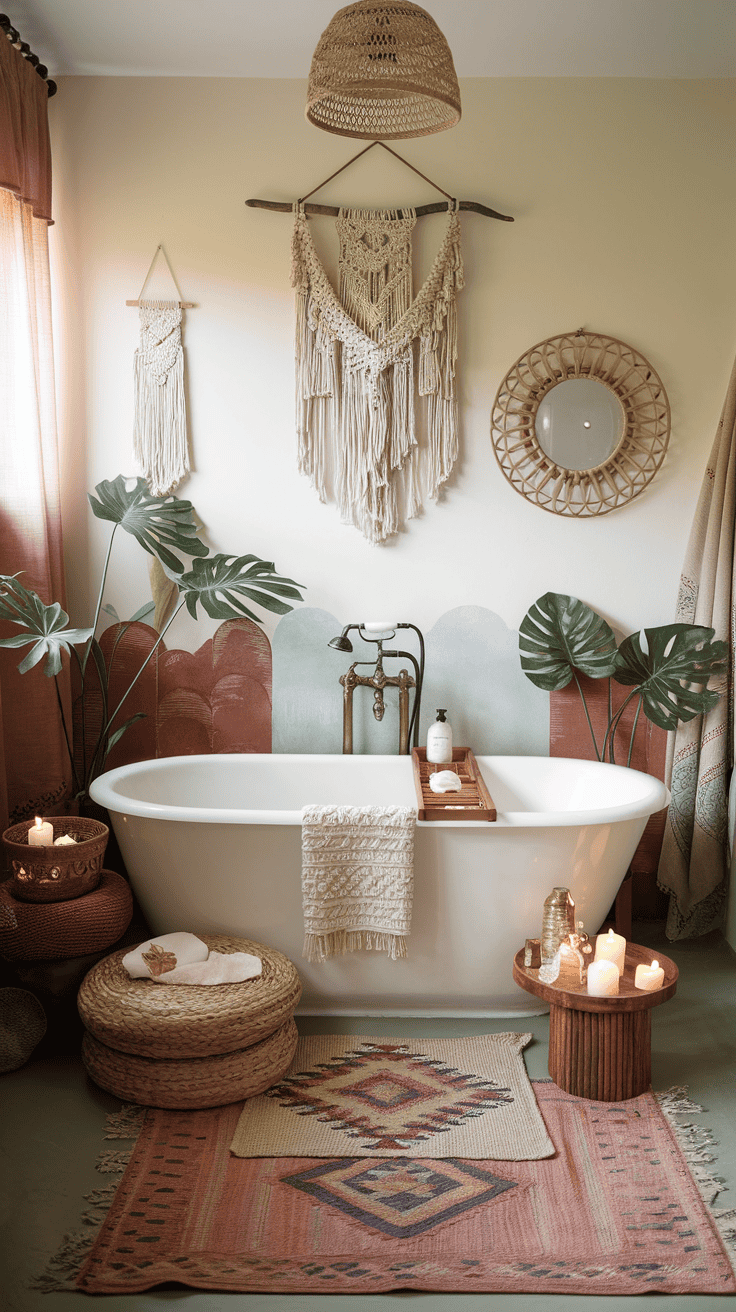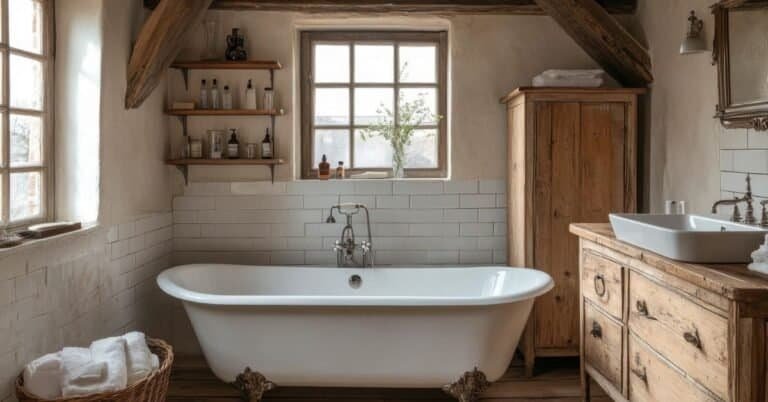Are you dreaming of turning your bathroom into a peaceful haven? A Japanese style bathroom might be just what you need. These spaces aren’t just beautiful—they’re designed to help you relax and unwind after a long day.
Japanese bathroom design focuses on simplicity, natural elements, and function. By bringing these elements into your home, you can create your own zen bathroom retreat.
Let’s explore 15 ideas that will help you transform your regular bathroom into a Japanese-inspired sanctuary.
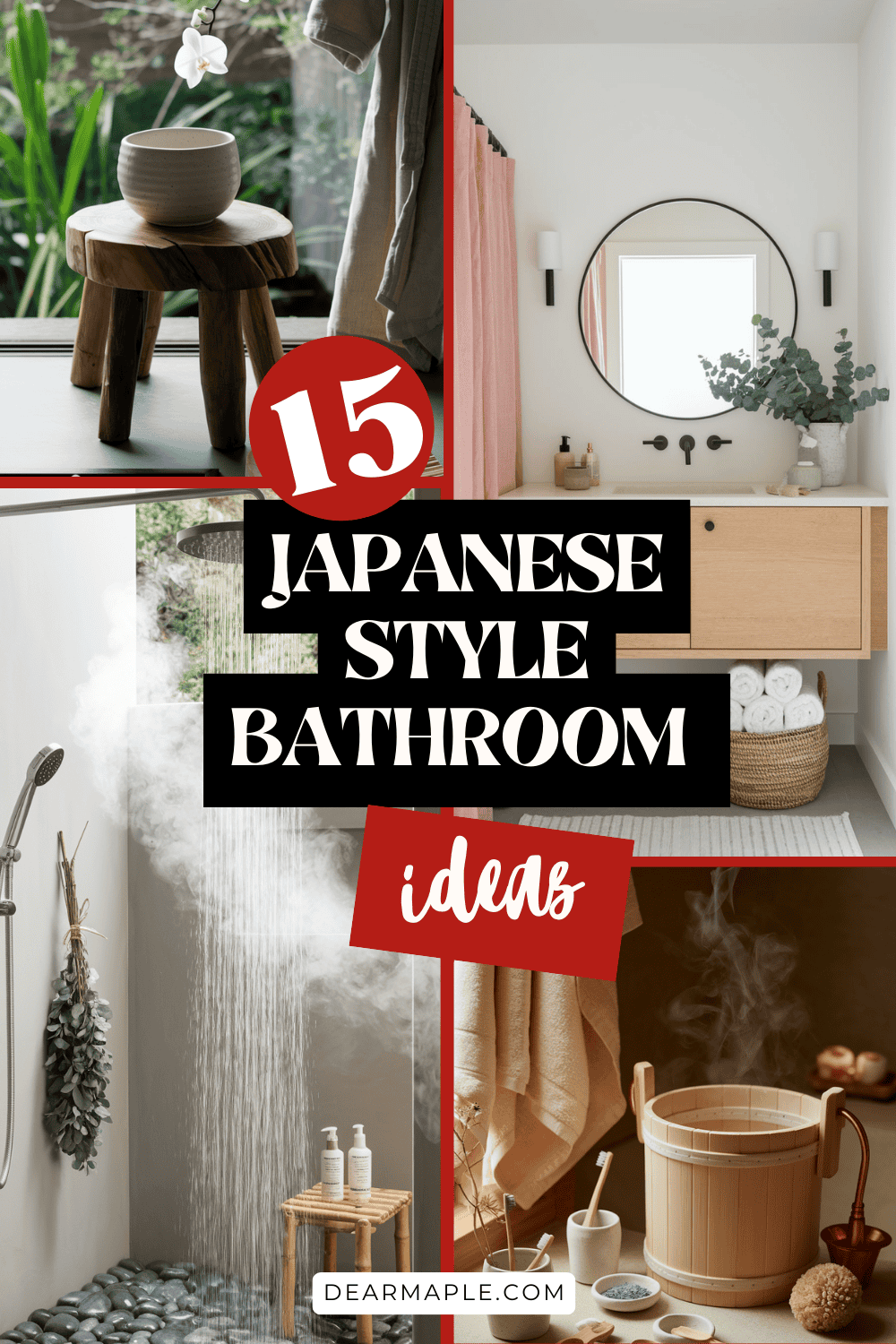
1. Traditional Japanese Soaking Tubs (Ofuro)
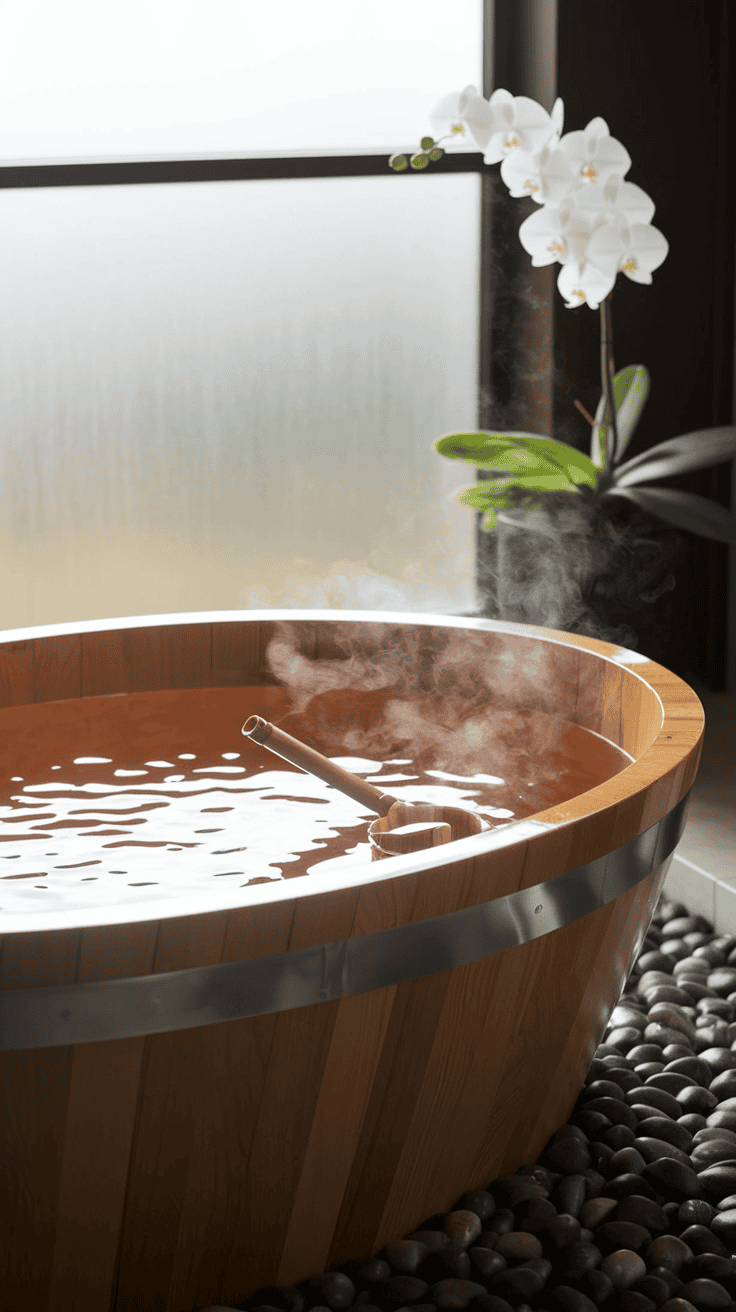
The centerpiece of any authentic Japanese style bathroom is the soaking tub. Unlike Western bathtubs that are long and shallow, a Japanese soaking tub is deeper and often round or square.
These tubs are designed for sitting rather than lying down, allowing you to soak up to your shoulders while sitting upright. The best part? You don’t need a huge bathroom to fit one—many Japanese soaking tubs are smaller than standard Western tubs but offer a much deeper soak.
Traditional materials include hinoki cypress wood, which gives off a lovely lemony scent when wet, but you can also find modern versions in stone, acrylic, or stainless steel.
2. Minimalist Japanese Bathroom Layouts
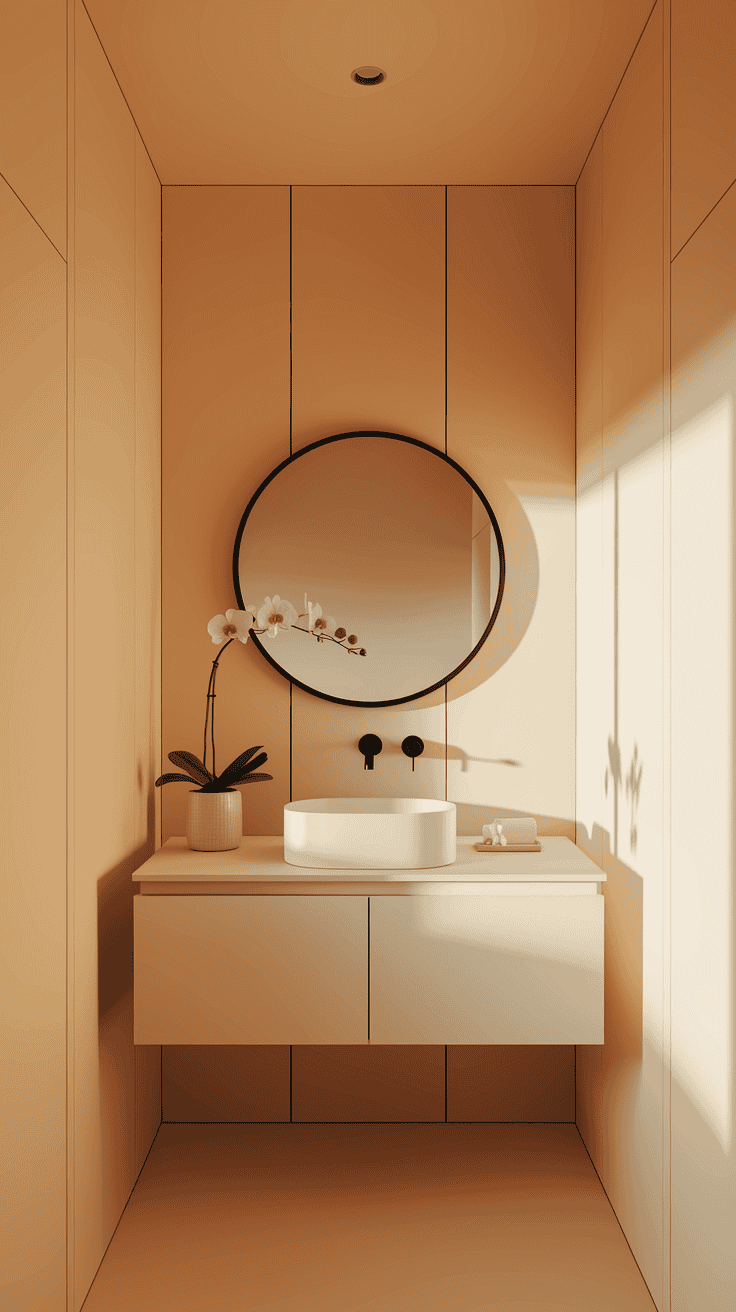
Japanese design embraces the “less is more” philosophy. A minimalist Japanese bathroom keeps things simple with clean lines and open spaces.
To achieve this look:
- Remove clutter and unnecessary items
- Choose simple fixtures without ornate details
- Use built-in storage to hide toiletries
- Keep countertops clear
- Opt for a floating vanity to create more visual space
This minimalist approach not only looks beautiful but also creates a sense of calm by reducing visual noise.
3. Natural Materials and Elements
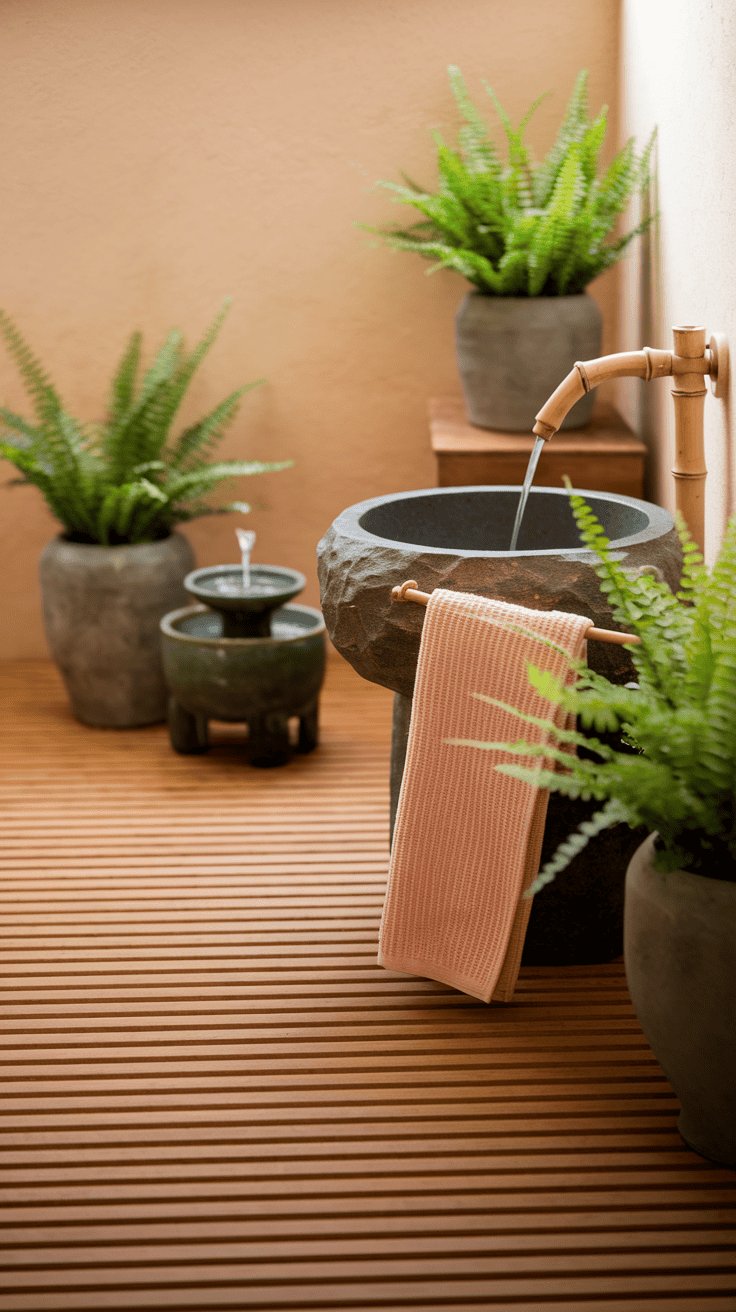
Japanese bathrooms bring the outdoors in through natural materials. This connection to nature (called “shizen”) is a key element of Japanese design.
Try incorporating:
- Wood elements like cedar or bamboo for shower floors, stools, or accessories
- Stone basins or countertops
- Pebble flooring that massages your feet
- Live plants that thrive in humidity (bamboo, ferns, or orchids work well)
- Small indoor water features for peaceful sounds
These natural elements help create a sense of harmony and balance in your bathroom space.
4. Japanese Bathroom Tiles with Traditional Patterns

Tiles can add subtle pattern and texture to your Japanese-inspired bathroom. Look for Japanese bathroom tiles featuring:
- Subtle wave patterns inspired by water
- Geometric shapes
- Sakura (cherry blossom) motifs
- Hexagonal patterns
- Natural stone textures
For an authentic look, stick to neutral colors like white, cream, gray, or black, with perhaps one accent color like indigo blue or sage green.
5. Innovative Wet Room Concepts
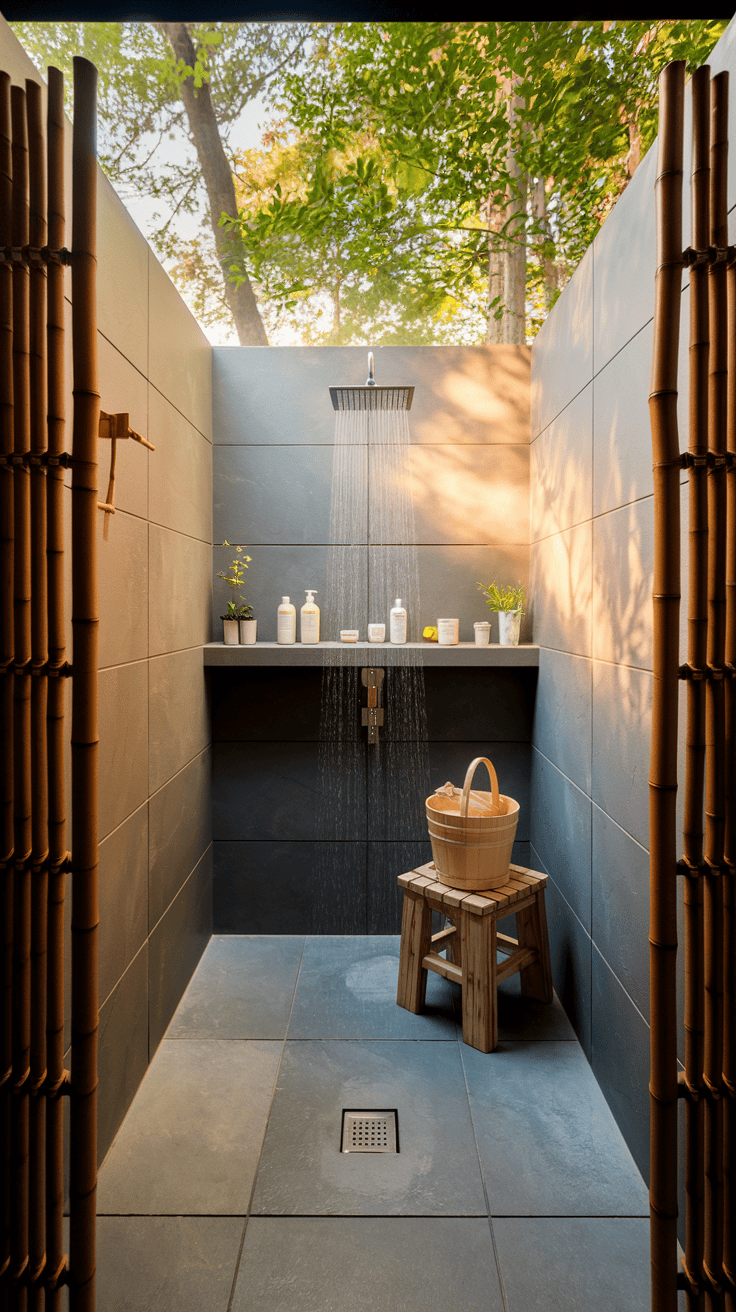
Many Japanese bathrooms are designed as wet rooms, where the entire space is waterproof, and the shower area isn’t separated by a curtain or door.
Benefits include:
- Easier cleaning (you can spray down the whole room)
- More open, spacious feel
- Better accessibility
- No shower curtains to collect mildew
To create a wet room, you’ll need proper waterproofing, drainage slopes, and water-resistant materials throughout.
6. Japanese-Inspired Lighting Solutions
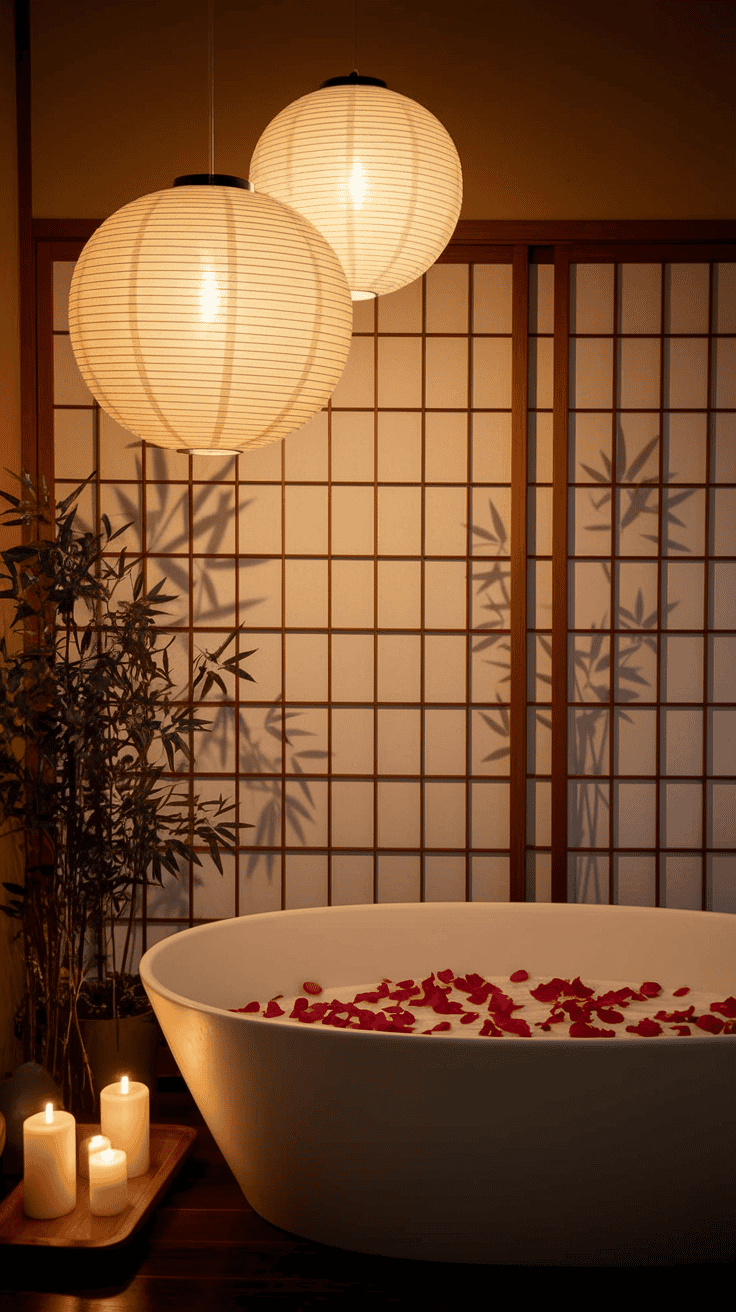
Lighting plays a crucial role in creating the right atmosphere. Japanese style bathrooms often feature:
- Soft, diffused light rather than harsh overhead fixtures
- Paper lanterns or shoji-inspired light fixtures
- Recessed lighting that creates a gentle glow
- Candles for bathing rituals
- Small windows placed to maximize natural light while maintaining privacy
The goal is to create a peaceful, shadow-rich environment rather than a brightly lit space.
7. Smart Storage in Japanese Style Bathrooms
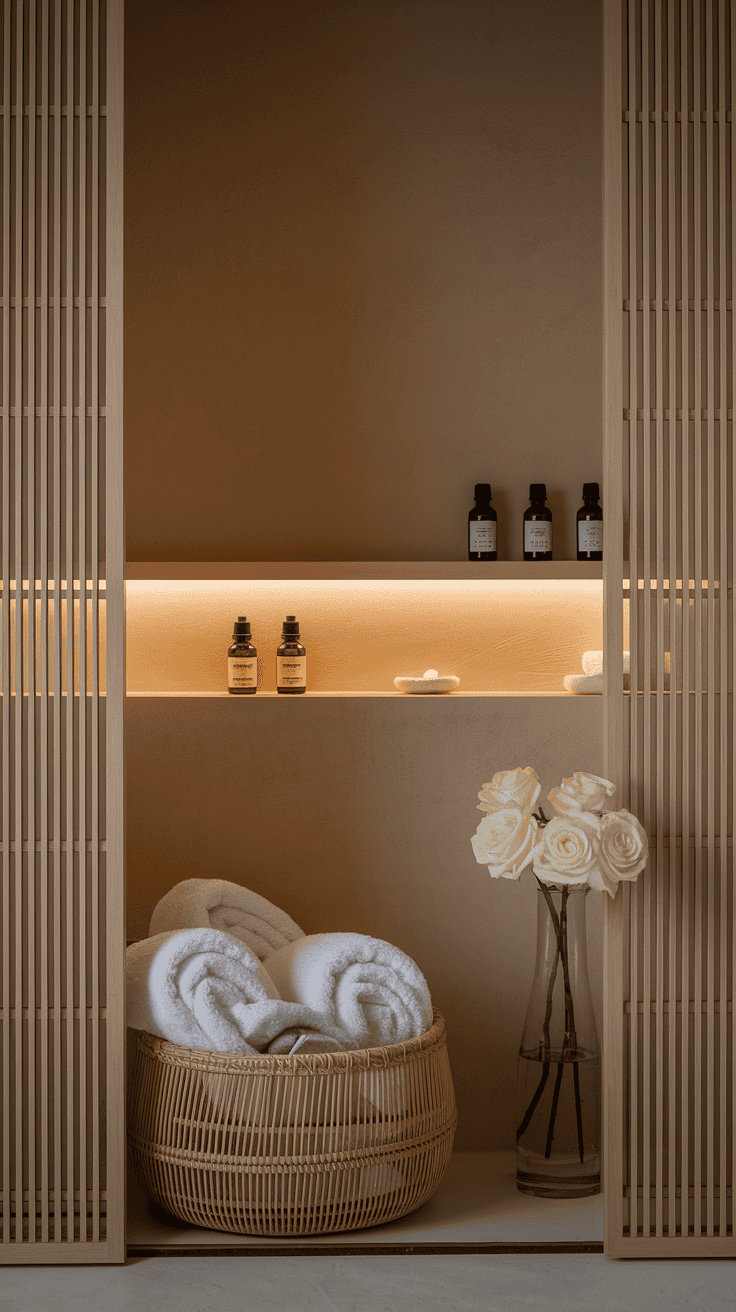
Japanese design values clear, open spaces, which means clever storage is essential. Consider:
- Simple wooden shelving for displaying only a few beautiful items
- Hidden cabinetry that blends into walls
- Built-in niches for bath products
- Bamboo baskets and boxes for organizing smaller items
- Under-sink storage that doesn’t disrupt the clean lines
Remember, the goal isn’t to store more—it’s to need less and store it beautifully.
8. Japanese Scandinavian Bathroom Fusion (Japandi)

If you love both Japanese and Scandinavian design, you’re in luck—these styles blend beautifully in what’s known as “Japandi.”
A Japanese Scandinavian bathroom combines:
- Natural materials from both traditions
- Neutral color palettes with occasional pops of muted color
- Clean lines and functional design
- Handcrafted elements that show natural imperfections
- Cozy textiles like linen towels that add warmth to minimal spaces
This fusion creates spaces that are minimal yet warm, simple yet inviting.
9. Traditional Ritual Stations

Japanese bathing is about more than getting clean—it’s a ritual for relaxation and reflection. Consider adding elements that support this ritual:
- A small wooden stool and bucket for washing before soaking
- A handwashing basin near the entrance
- A place to sit and prepare for bathing
- Stones or a small zen garden element for focus
- Tea making supplies for enjoying during or after bathing
These touches transform bathing from a simple hygiene task into a meaningful ritual.
10. Japanese-Inspired Showers and Water Features
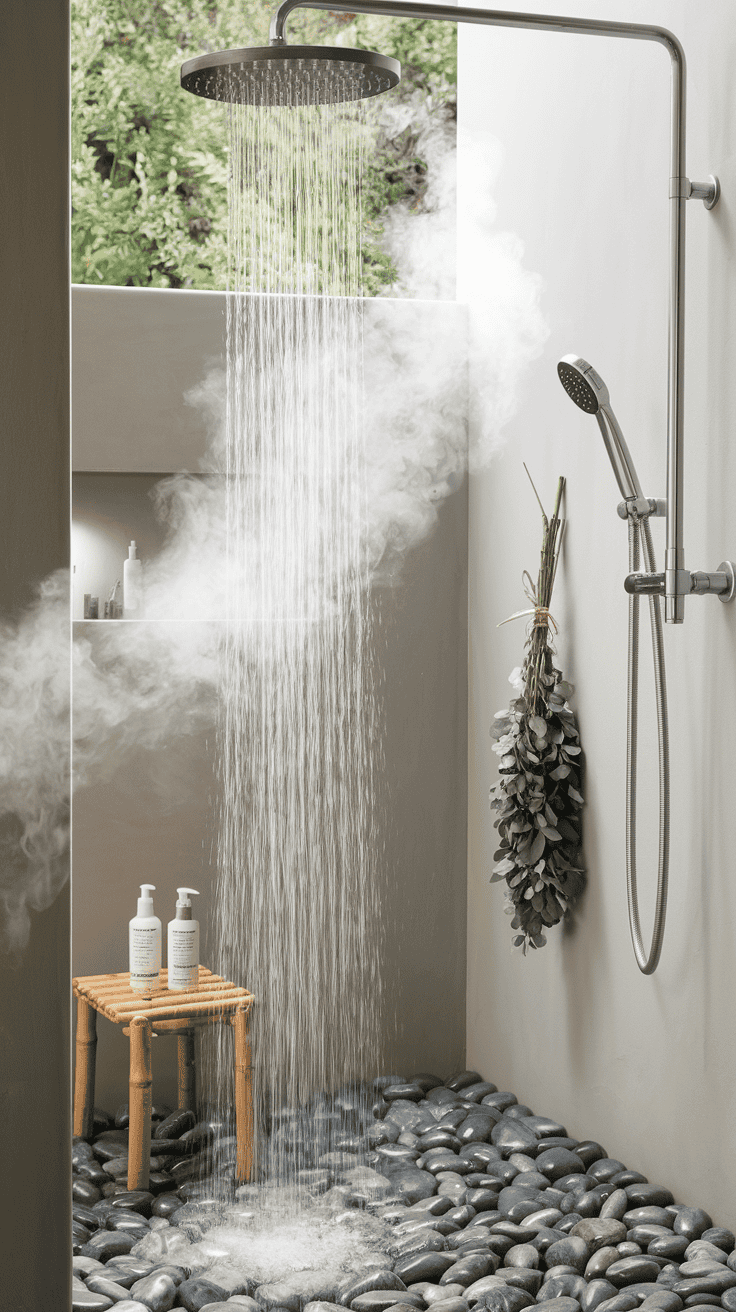
If a soaking tub isn’t possible, you can still bring Japanese elements into your shower:
- Rainfall shower heads for a gentle, natural shower experience
- Bamboo water spouts
- Pebble shower floors for foot massage
- Wooden shower stools
- Simple glass dividers instead of shower curtains
These features create a more natural showering experience that feels connected to the outdoors.
11. Incorporating Shoji Screens and Sliding Doors

Traditional Japanese homes use shoji screens (translucent paper over wooden frames) and sliding doors to save space and filter light.
In your bathroom, consider:
- Sliding pocket doors instead of swing doors
- Frosted glass partitions inspired by shoji screens
- Actual shoji screens for dividing spaces
- Cabinet doors with shoji-inspired panels
These elements save space while adding authentic Japanese character.
12. Color Theory in Japanese Bathroom Design
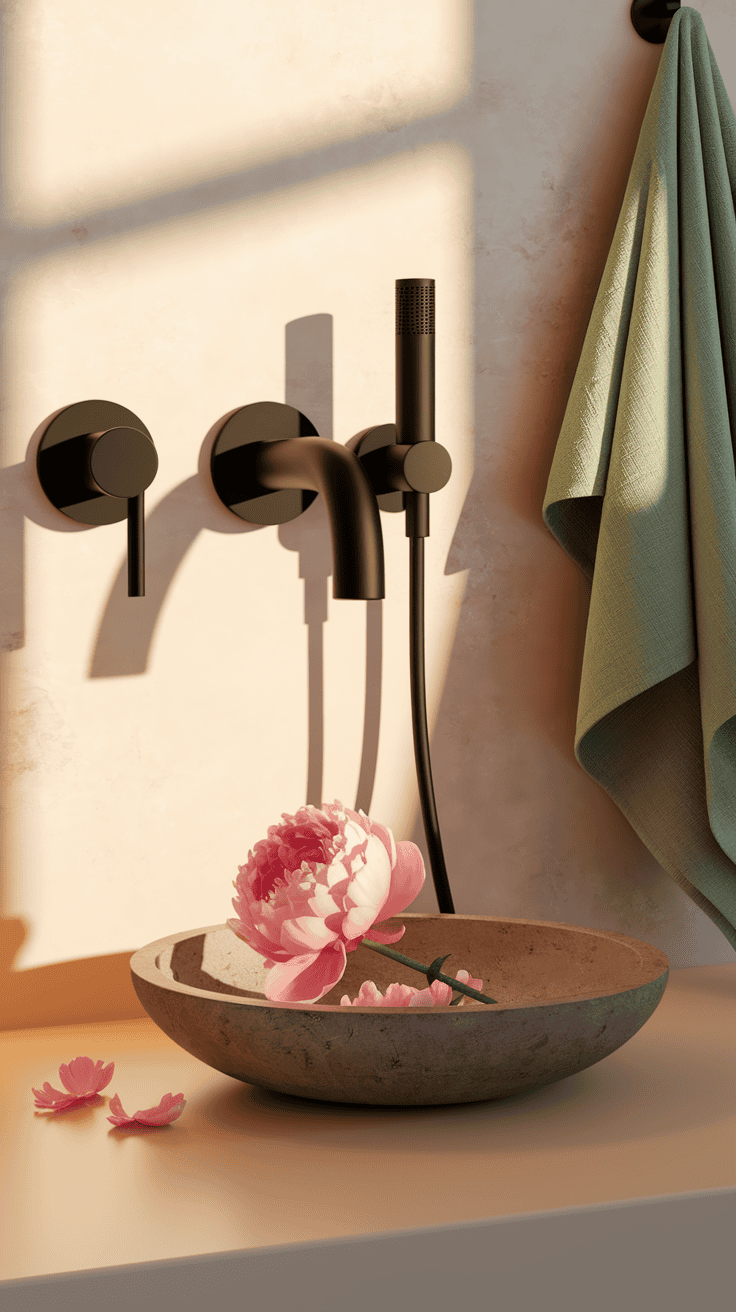
Japanese bathrooms typically feature a restrained color palette:
- Neutral base colors (whites, creams, beiges)
- Natural wood tones
- Black accents for contrast
- Occasional muted colors from nature (moss green, stone gray, sea blue)
This limited palette creates a peaceful environment without visual distractions. The focus becomes texture and form rather than bold colors.
13. Accessorizing with Authentic Elements
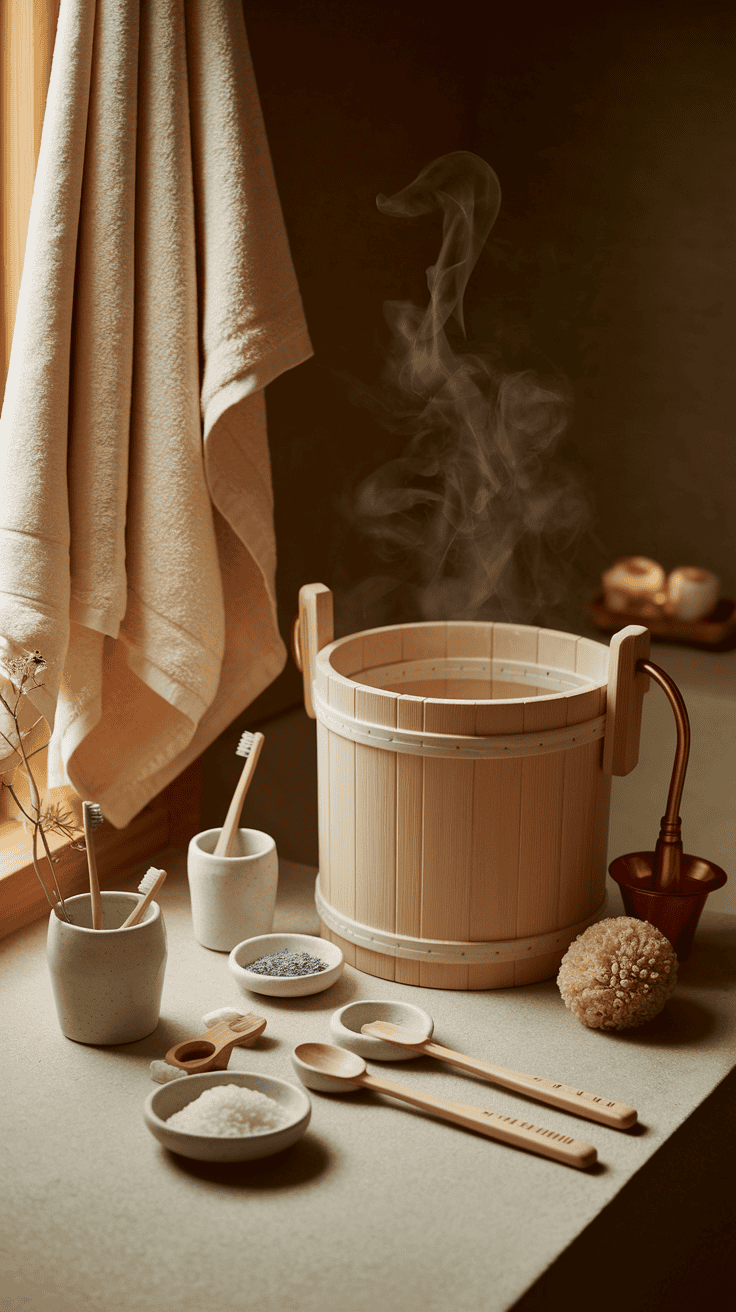
The right accessories can enhance your Japanese bathroom’s authenticity:
- Wooden bath buckets and ladles
- Natural sponges and body brushes
- Bamboo toothbrushes in simple holders
- Ceramic soap dishes
- Small ikebana flower arrangements
- Natural fiber towels in neutral colors
Choose just a few beautiful, functional pieces rather than many decorative items.
14. Creating a Sensory Experience
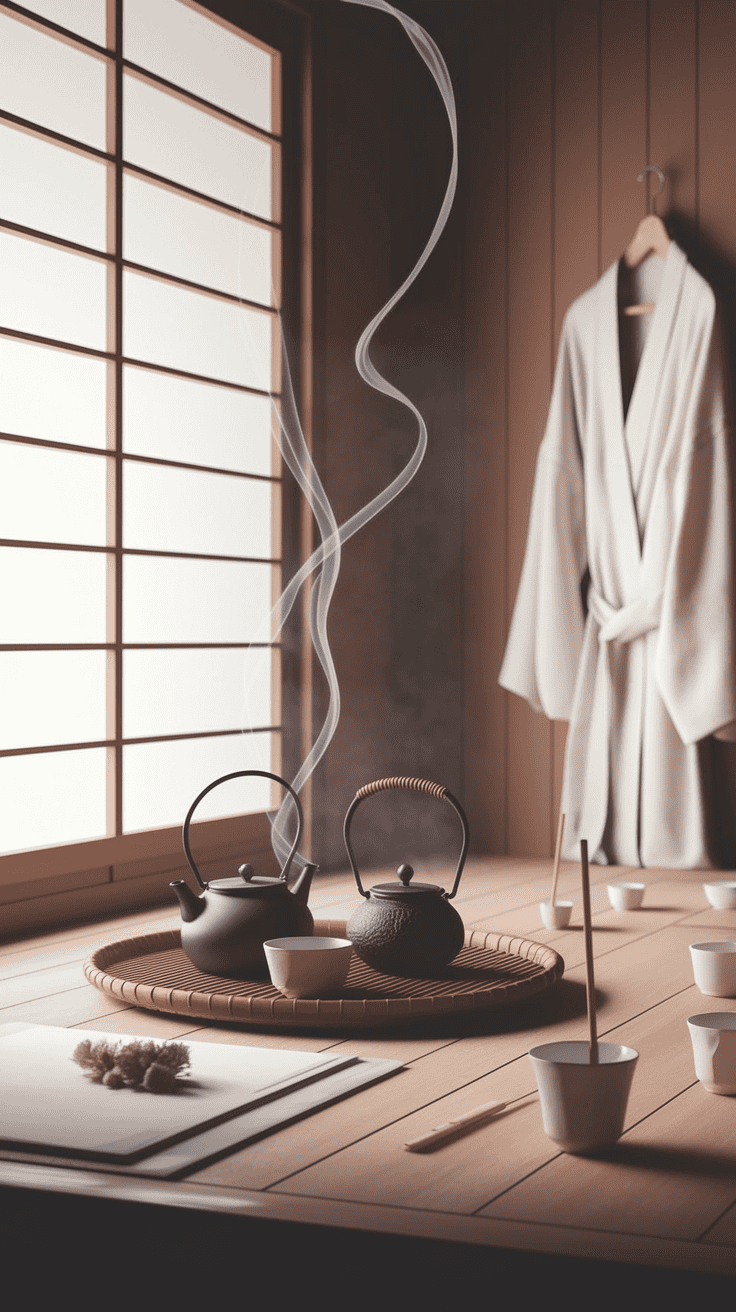
A zen bathroom appeals to all senses:
- Sight: clean lines, balanced proportions
- Touch: contrasting textures like smooth stone and rough wood
- Sound: water features, bamboo wind chimes
- Smell: hinoki wood, subtle incense, or essential oils
- Taste: a station for brewing green tea to enjoy during or after bathing
By considering all senses, you create a fully immersive relaxation experience.
15. Modern Technologies in Traditional Settings
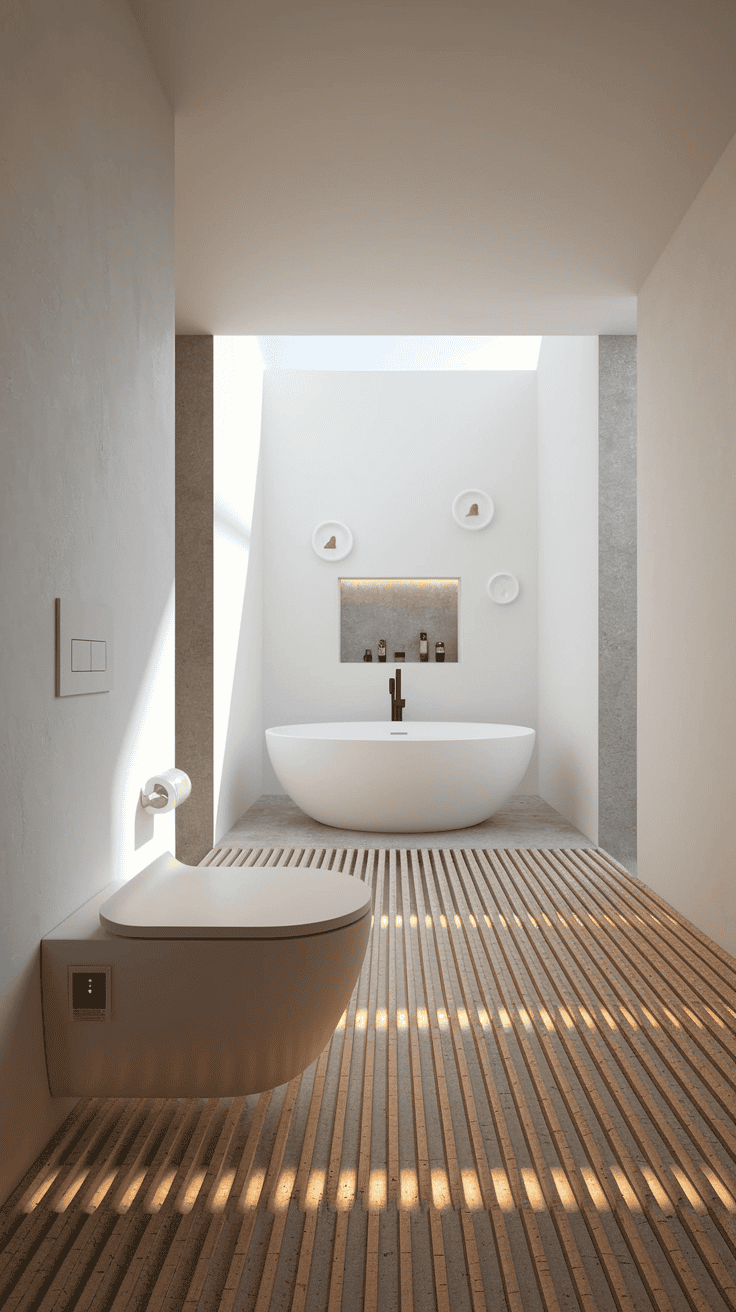
You don’t have to sacrifice modern comforts to achieve Japanese style:
- High-tech toilets with bidet functions blend surprisingly well with traditional aesthetics
- Radiant floor heating keeps natural stone and wood floors comfortable
- Hidden speakers can provide peaceful nature sounds
- Smart lighting systems can create the perfect ambiance for different times of day
The key is integrating these technologies discreetly so they don’t disrupt the peaceful atmosphere.
Creating Your Own Japanese Style Bathroom
Remember, creating a Japanese style bathroom isn’t about perfectly recreating a bathroom from Kyoto. It’s about bringing elements of Japanese design that promote peace, simplicity, and connection with nature into your home.
You can start small with a few wooden accessories and a color palette refresh, or go all-in with a complete renovation featuring a Japanese soaking tub and wet room design.
Whatever approach you take, focus on creating a space that feels peaceful to you—a true zen bathroom retreat from the bustle of daily life.
Would you try any of these Japanese bathroom ideas in your home? Which element speaks to you most? Share your thoughts or your own Japanese style bathroom photos in the comments below!

